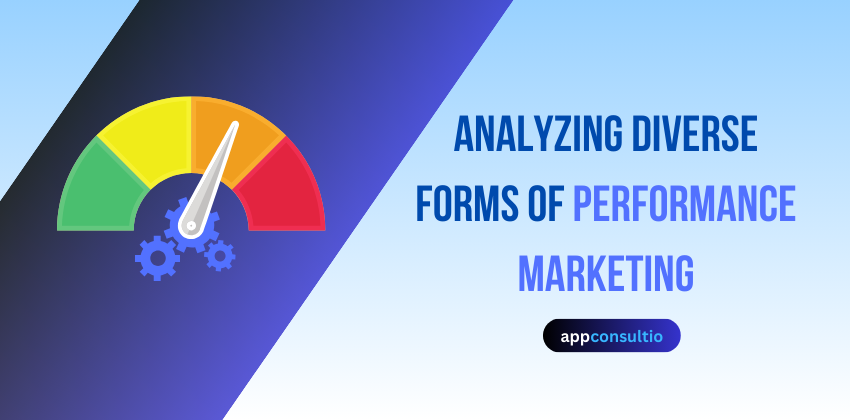
Analyzing Diverse Forms of Performance Marketing
Marketing is always changing. While old methods like print ads still work, new technologies keep popping up. In the past, advertisers paid for TV, radio, or print ads. But now, digital marketing gives them more options. Performance marketing is a big deal now. Instead of paying to show ads, advertisers only pay when people do something, like buy something or sign up for something.
Performance marketing, a subset of digital marketing, has emerged as a highly efficient and results-oriented approach for brands seeking measurable outcomes from their advertising efforts. Unlike traditional marketing methods, where brands pay for ad space upfront, regardless of performance, performance marketing operates on a pay-for-results basis. Performance marketing is getting popular, especially online. It's cheaper and more focused, so many advertisers use it in their strategies.
This results-driven approach is facilitated by data-driven strategies, where key performance indicators (KPIs) are used to track and measure the success of marketing initiatives. Rather than making blanket payments for marketing services regularly, advertisers only incur costs when their campaigns achieve predefined goals. Real-time analytics are crucial in performance marketing, enabling advertisers to identify the most effective partners or channels driving web traffic, leads, or sales.
Let's take a look at the types of performance marketing -
1. Social media Performance marketing - Social media performance marketing involves advertising on various social media platforms to enhance brand awareness, engagement, and sales. The performance metrics associated with social media marketing primarily focus on engagement, including likes, comments, shares, saves, and reposts. With numerous social media platforms available, the selection depends on the target audience. For instance, brands targeting a younger demographic may succeed on platforms like Snapchat, TikTok, and Instagram, while those targeting professionals may prefer Facebook or LinkedIn.
2. Display Advertisement - Display advertising represents a visually engaging form of online marketing, typically incorporating images, videos, and audio elements. Banner ads and rich media formats are common examples of this advertising method. Despite its reputation for low clickthrough rates, the key to unlocking its potential lies in adopting a targeted approach. It's essential to deploy display advertising only on websites frequented by your target audience, such as relevant blogs or digital publications.
3. Native Advertising - Native advertising, in contrast to display adverts, seamlessly blends into its surroundings. This marketing approach aims to integrate so smoothly with the surrounding content that many online users can't distinguish between native adverts and the content itself.
For instance, Instagram ads designed to resemble regular posts on the platform exemplify native advertising. Similarly, sponsored blog posts or articles crafted to match the style of the hosting webpage serve as another example. The performance metrics typically associated with native adverts include pay-per-click or pay-per-impression. Some publishers incorporate subtle advertisements within their content, resembling the website's style and tone, to drive better conversions without appearing overtly promotional.
4. Affiliate Marketing - Affiliate marketing encompasses various approaches, but at its core, it involves compensating partners for generating leads, sales, or traffic on your behalf. This can involve bloggers or influencers sharing their experiences with your products through posts or videos. Additionally, partners in affiliate marketing may include review, incentive, or coupon sites. When engaging in performance marketing, it's crucial to monitor all activities diligently, especially when collaborating with third parties, as in affiliate marketing. Tracking the sources of clicks, leads, and sales can be challenging, underscoring the importance of using a data-driven affiliate tracking platform to effectively optimize your key performance indicators (KPIs).
5. Search engine marketing - Performance search engine advertising involves the placement of ads on search engines like Google, Yahoo, and Bing in response to specific search terms. These ads provide an excellent opportunity to target potential customers who are likely already interested in your products or services. While paid ads guarantee visibility to potential customers, many companies also pursue the free, organic search approach through SEO.
In conclusion, performance marketing has emerged as a dynamic and results-driven approach for brands to achieve measurable outcomes in their advertising efforts. With its pay-for-results model and focus on data-driven strategies, performance marketing offers a cost-effective and targeted solution for reaching potential customers. From social media and display advertising to native ads, affiliate marketing, and search engine advertising, there are various avenues for brands to explore within performance marketing. By leveraging these strategies effectively, businesses can optimize their marketing efforts and drive meaningful results in today's ever-evolving digital landscape.